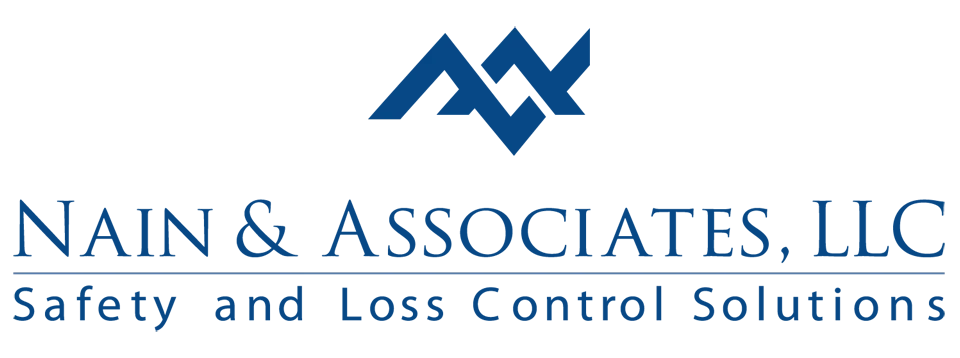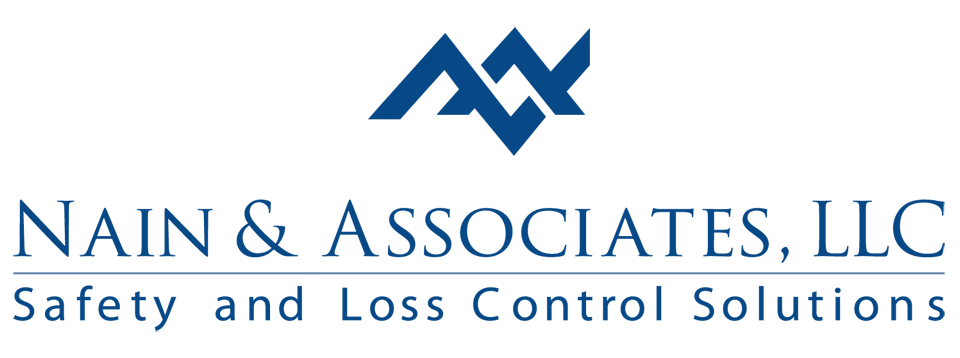

(828) 471-4317
Now Offering Spanish Safety Training!

Now Offering Spanish Safety Training!
Emergency Response Proposed Standard: Building a Compliant All-Hazards Plan
Emergency and Hazard Plans
What the Proposed Standard Emphasizes

OSHA’s proposed Emergency Response Standard expands protections to an all-hazards approach covering fire, EMS, technical rescue, hazardous materials and incident management. The draft emphasizes risk assessment, pre-incident planning, integrated ICS, medical programs, training, and performance-based PPE and equipment expectations across employers with response roles today.
It would cover public and private employers that establish or engage emergency response organizations, plus industrial brigades and contracted responders. The proposal addresses coordination with host employers, unified command, and aid agreements, ensuring plans align, competencies match assignments, and responders medically capable, fit-tested, and supervised.
Employers should not wait. Many core elements mirror industry consensus: hazard-specific preplans, staffing and qualifications, two-in/two-out for interior attacks, respiratory protection, rehab and medical monitoring, and post-incident review. Building these now improves readiness, reduces liability, and positions organizations to comply when OSHA finalizes the standard.

Core Program Elements for an All-Hazards Plan
Risk assessment and pre-incident planning anchor the program. Identify plausible scenarios—structural fire, hazmat release, [confined-space rescue] [https://nainllc.com/specialized-safety-confined-space-rescue-training ], trench collapse, severe weather, active threat—and map resources, access, and control zones. Define response levels, turnout times, and minimum staffing. Integrate ICS roles, unified command with host employers, and communication checklists. Document mutual-aid triggers, staging, and demobilization. Build job hazard analyses that connect tactics to controls, PPE, and monitoring expectations explicitly.
Training and qualifications ensure assignments match competence. Establish initial and recurrent training for ICS, fireground operations, hazmat awareness/operations/technician, technical rescue disciplines, patient care, and scene safety. Validate skills with drills and evaluated scenarios. Implement medical evaluations, physical ability standards, vaccinations where indicated, and fit testing. Provide rehab, heat-stress controls, and post-exposure follow-up. Maintain training matrices and credential rosters tied to positions, tasks, and mutual-aid requirements as documented.
Equipment and facilities must support tactics. Specify PPE ensembles by hazard, including structural gear, wildland, splash suits, respiratory protection, and ballistic or cut-resistant options where risks justify. Manage maintenance, inspections, service life, and replacement. Verify apparatus readiness, compartment layouts, and decontamination areas. Standardize communications and interoperability. Establish post-incident review, near-miss reporting, and corrective-action tracking so improvements flow back into training, preplans, procurement, and leadership metrics system.
Coverage, Exceptions, and Interface with Host Employers

Coverage likely extends to employers that establish or direct responders, even when emergency duties are collateral to primary jobs—such as industrial brigades, university teams, and EMS. Contractors hired to provide response capability are in scope. Written agreements must clarify responsibilities, integration, and insurance requirements clearly.
Community responders may meet parts of the proposal through NFPA-based programs, but employers must verify equivalency and document integration. If relying on public agencies, confirm response times, capabilities, and joint training. Maintain contact rosters, radio plans, and site preplans accessible to those agencies when needed.
Small employers with limited hazards may assign emergency action to evacuation and coordination only; however, if response is expected, the plan must match the hazard. Be honest about capability. Define when to call external help, how to secure scenes, and who manages continuity afterward onsite.
Coverage likely extends to employers that establish or direct responders, even when emergency duties are collateral to primary jobs—such as industrial brigades, university teams, and EMS. Contractors hired to provide response capability are in scope. Written agreements must clarify responsibilities, integration, and insurance requirements clearly.
Community responders may meet parts of the proposal through NFPA-based programs, but employers must verify equivalency and document integration. If relying on public agencies, confirm response times, capabilities, and joint training. Maintain contact rosters, radio plans, and site preplans accessible to those agencies when needed.
Small employers with limited hazards may assign emergency action to evacuation and coordination only; however, if response is expected, the plan must match the hazard. Be honest about capability. Define when to call external help, how to secure scenes, and who manages continuity afterward onsite.

Bringing the pieces together requires a written, living plan that links risk assessment, ICS roles, training matrices, medical and rehab protocols, PPE specifications, apparatus readiness, and mutual-aid agreements. Schedule tabletop exercises and functional drills that test decision-making, communications, and logistics. Capture lessons learned, update preplans, and revise procurement. Define activation criteria, staging locations, rehab areas, decon corridors, and handoff to recovery operations. Assign recordkeeping duties, version control, and audit frequency so leadership sees gaps clearly.
Tie the plan to budgeting and staffing. Forecast training hours, replacement cycles, service intervals, and drill costs; include mutual-aid training and interoperable radios. Establish metrics: turnout times, drill performance, credential currency, and corrective-action closure. Quarterly reviews with operations, HR, and procurement sustain momentum and prove diligence during audits. Document near-miss trends, heat-stress incidents, and responder injuries to drive improvements. Use after-action reports, photo logs, and training rosters to demonstrate and inform leadership, insurers, and clients.
Implementation Roadmap: From Gap Assessment to Drills
Start with a gap assessment against the proposal and your risks. Inventory responders, roles, training, medical programs, PPE, equipment, and facilities. Compare to credible guidance, client requirements, and mutual-aid expectations. Prioritize life-safety controls and time-critical capabilities first: incident command, communications, respiratory protection, decon, rescue, rehab, and post-incident review. Establish owners, deadlines, and budgets; bundle quick wins, plan pilots, and sequence larger improvements over quarters with executive sponsorship.
Write or update the all-hazards plan. Link each hazard to tactics, staffing, PPE, decision aids, and monitoring. Create checklists for activation, size-up, hazard control, rehab, and demobilization. Build a communications plan covering radio discipline, plain language, encryption needs, and redundancy. Define documentation ICS forms, photo logs, training rosters, and corrective-action tracking. Standardize templates, version control, and review cycles so updates propagate quickly across sites with accountable owners.
Drill progressively. Begin with tabletops, move to functional drills, then full-scale exercises with mutual-aid partners. Evaluate realism, fairness, and safety. Capture outcomes, assign corrective actions, and close them before the next drill. Track performance trends, credential currency, and equipment readiness to demonstrate capability to leadership, clients, insurers, and regulators. Publish after-action reports, share lessons, update preplans, and refresh training so improvements become standard practice for everyone.
Documentation, Records, and Defensibility
Document the basis for decisions. Keep risk assessments, hazard rankings, and selection rationales for tactics, PPE, staffing, and equipment. Maintain inventories, inspection logs, calibration records, fit-test results, medical clearances, and training rosters. Link documents to positions and tasks so auditors can trace requirements to evidence.
Control versions. Date policies, identify approvers, and archive superseded documents. Use checklists for readiness, drill evaluations, corrective actions, and quarterly reviews. Keep photos showing controls before and after events; caption with dates, locations, and doer. Centralize records with search so supervisors retrieve proof fast easily.
Demonstrate continuous improvement. Track lagging indicators: drill scores, turnout times, credential gaps, near-misses, injuries, equipment uptime, and corrective-action closure. Summarize in dashboards for leadership and clients. Use findings to update training, preplans, staffing, and budgets. This cycle strengthens readiness and improves defensibility if incidents occur.

Every site is different, but the foundations travel: a clear plan, trained people, fit equipment, and disciplined documentation. Map hazards, decide which scenarios you will handle versus stabilize and hand off, and align staffing and credentials accordingly. Build trust with responders through joint drills, open communication, and shared preplans. Measure what matters, celebrate improvements, and resource the gaps. When leadership sees readiness tracked and risks reduced, support and budgets follow—making compliance easier and operations safer.
Nain & Associates can help you translate the proposal into a practical, defensible all-hazards program. We facilitate gap assessments, author plans, build training matrices, design drills, and organize records that prove capability. Our bilingual trainers and on-site professionals accelerate progress while aligning with client and insurer expectations across industries. From manufacturing and utilities to campuses and municipalities, we tailor scope, budgets, and timelines; coach supervisors to sustain systems that endure inspections, incidents, and leadership transitions.
Takeaways and How Nain & Associates Can Help
Bottom line: the proposed Emergency Response Standard pushes employers toward a modern, risk-based, all-hazards program that proves capability, not just paperwork. You can act now by mapping hazards, defining ICS roles, building training matrices, and aligning PPE and equipment to tactics. These steps strengthen readiness and ease eventual compliance. Start with quick wins, assign owners, and schedule drills so improvements stick and auditors see consistent, documented performance.
Nain & Associates delivers English and Spanish training, gap assessments, plan development, and realistic drills. We can embed on-site safety professionals, coordinate with public responders, and organize records that demonstrate competence. Whether you manage one facility or a multi-site footprint, we tailor scope, budgets, and timelines to your risks and goals. Our audits mirror OSHA’s approach, helping supervisors apply procedures that perform under inspections, reviews, and emergencies.
Ready to move forward? Call (828) 471-4317 or request services. We’ll help you design an all-hazards plan, stand up drills and documentation, and coach leaders to sustain improvements. The result: safer responders, faster recoveries, and a program that stands up during audits, client prequalification, and real-world incidents. From policies and training to equipment lists and mutual-aid agreements, we align details with your risks, operations, and culture.
Have Questions About What We Offer?
To learn more about our services, contact us today!
Have Questions About What We Offer?
Contact us to learn more about our services

Speak with a
safety Specialist
Workplace Safety Training & Consulting Experts for
Charlotte, Hickory, Asheville, North Carolina and
the Southeast for since 2005!
Design By: Customers.Plus
© 2025 | Nain & Associates LLC


